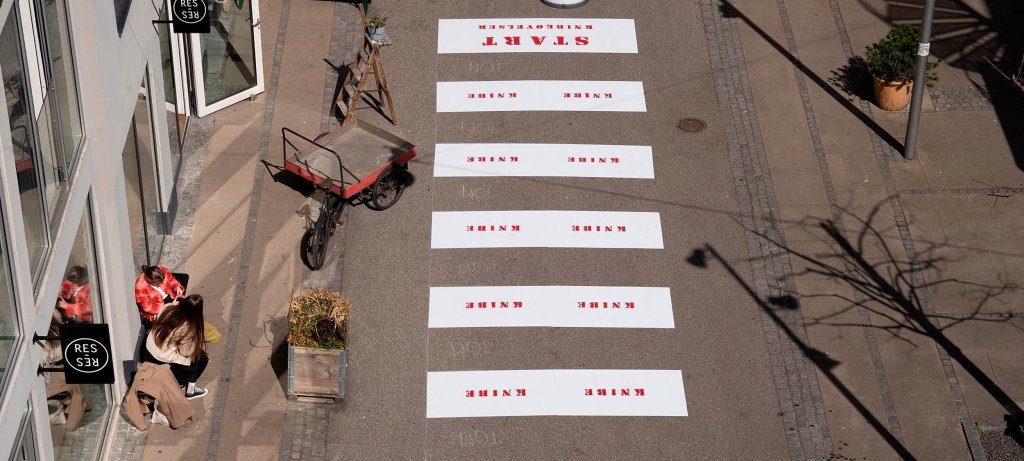One of the solutions that KEA’s award-winning project against incontinence led to was ‘Knibestriben’ (a `pelvic floor muscle exercise´ crosswalk) in front of KEA.
Design against incontinence

"Design against incontinence" was a research and teaching project established by KEA Digital in collaboration with the company NoviPel, University College Copenhagen and the University of Copenhagen.
The project resulted in IoT solutions, mobile games, wearable tech, and other technical solutions being developed side by side with analogue initiatives such as ‘Knibestriben’.
Because incontinence is a major societal problem
Most women who have given birth have occasionally experienced the inability to control the flow of urine from the bladder. In other words, they suffer from incontinence. The aim of the project was therefore to develop products and devices to help women with incontinence and, at the same time, raise awareness of the problem.
It all began with a start-up seminar
In 2020, KEA held a seminar for start-ups working with IoT. Here, Claus Leth Jeppesen, lecturer at KEA's Business & IT programme, and Per Liljenberg Halstrøm, lecturer at KEA Digital, found that the company NoviPel's IoT tool VisU Pro had an interesting development potential. VisU Pro is intended to help women exercise and monitor their pelvic floor muscles to counteract incontinence.
Research project of the year 2021
Please read: Design against incontinence wins research award
Broadly-based project collaboration
KEA established cooperation with NoviPel, mother-and-child groups, a midwife from University College Copenhagen, a researcher from the University of Copenhagen and researchers, teachers and students from KEA.
Co-design with mother-and-child groups
The project's research group consisted of three employees from KEA: Claus Leth Jeppesen, Per Liljenberg Halstrøm and lecturer from Design, Mette Laier Henriksen. One of the methods used by the research group for idea development was to conduct co-design sessions with Copenhagen mother-and-child groups. Together with the new mothers, the research group developed ideas to combat incontinence in everyday life through pelvic floor muscle exercises and dialogue-creating products such as a ‘knibestribe’ (a ‘pelvic floor muscle exercise’ crosswalk).
Exercise your pelvic floor with ‘knibestriben’
‘Knibestriben’, one of the ideas from the project, was exhibited in Guldbergsstræde. ‘Knibestriben’ should remind the female pedestrian to squeeze her pelvic floor while counting to six and thus exercise her pelvic floor muscles. ‘Knibestriben’ was just as much designed to create dialogue and help make the issue of incontinence less of a taboo.
'Knibestriben' at Guldbergsstræde
Inventive students developed games and jewellery
The research group also involved KEA students. The students experimented with the development of different products, and continuously presented the end users and NoviPel with their solution proposals and received feedback.
Students from Multimedia Design and Computer Science developed mobile games in which a balloon floated on the female user’s screen if she squeezed her pelvic floor muscles. They also created wearable technology in the shape of jewellery programmed to continuously remind the wearer to squeeze.
Co-design as a method has great potential
Because co-design as a method proved to be very successful, the project also led to a research article. Docent and project manager Per Halstrøm and Christine Isager at the University of Copenhagen wrote the research article "An engaging form of pelvic floor muscle exercises" in Rhetorica Scandinavica (2021, vol 83, pp. 1-21).
Read the research article in Rhetorica Scandinavica (subscription required)

